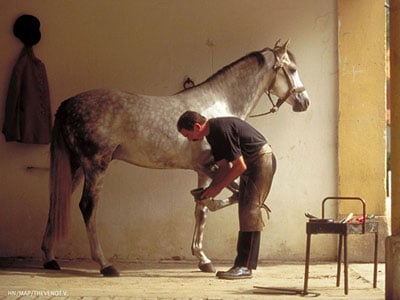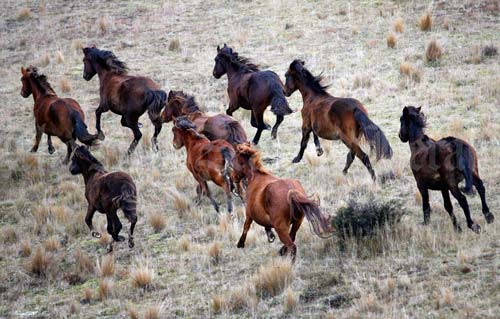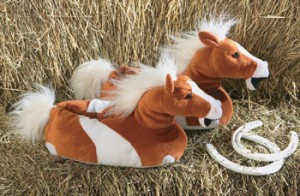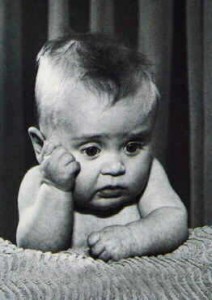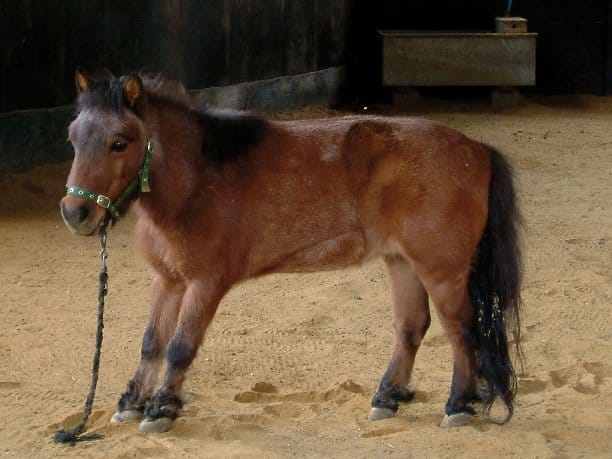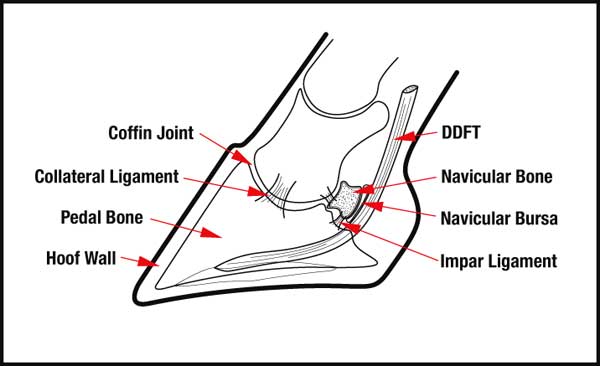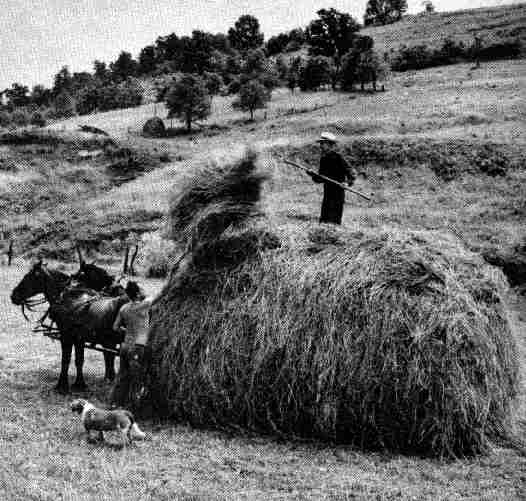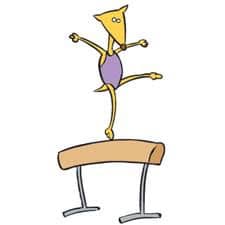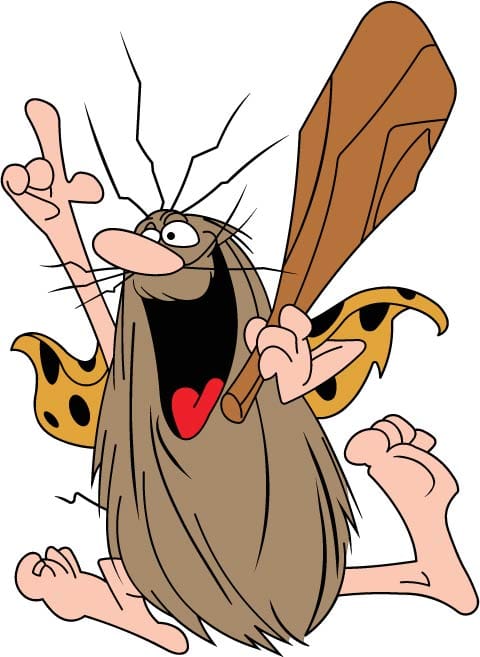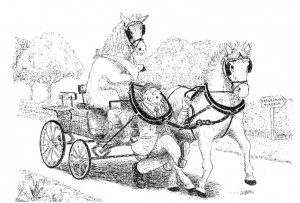 The horse’s foot is so important that they’ve even come up with a cliché about it. You know, “No foot, no horse.” Yada yada yada. But, as another cliché goes, “The devil is in the details.”
The horse’s foot is so important that they’ve even come up with a cliché about it. You know, “No foot, no horse.” Yada yada yada. But, as another cliché goes, “The devil is in the details.”
The horse’s foot is very important. The problem – when it comes to your horse’s hooves (feet) – is that everyone has their own strong opinions. So, you’ve got barefoot trimming advocates and natural hoof advocates and “equine podiatrists” and those who love pads and those who hate pads and aluminum shoes and steel shoes and weights and mediolateral balance and reverse palmar angles and all sorts of other vernacular thrown out by devotees of this or that particular approach. And, besides the fact that they think that the horse’s foot is really important, they also generally agree on one other thing: they are right, and everyone else is wrong.
So, to help make things easier for you, I’m here to help sort it all out for you. Here are a few rules to shoe/trim by.
1. There’s no such thing as one “natural” foot. When it comes to health, there’s this big push for “natural.” Honestly, natural is one of the words that I hate (CLICK HERE to read my article on “natural,” and three other words I hate), mostly because it doesn’t mean much of anything. It’s a pretty slippery word, but in health contexts it’s mostly used as a synonym for something good, since it comes from mother nature.
I’m not exactly sure where “natural” got such a benign reputation. I mean, rattlesnakes and hurricanes are natural, but not necessarily wonderful. But people have actually looked at the hooves of horses in the wild – where they, presumably, are “natural” – and it turns out that they’re not necessarily all that great.
So, for example, in wild New Zealand Kaimanawa horses, there is large variation in the hoof measurements, and the foot type isn’t consistent. The measurements that were taken fell outside of the normal range recommended by two veterinarian assessors 35% of the time! There was no indication that these horses suffered more hoof problems as a result of their foot conformation, no matter what conformation that they had (CLICK HERE to read about the study). The same goes for the United States, where the feet of wild horses adapt to their surroundings in an attempt to get rid of energy depending on the ground on which they travel. Wild horses in the US end up supporting their weight in a variety of configurations (CLICK HERE to read about that). And, mostly, they do great.
BOTTOM LINE? What’s “natural” for your horse isn’t necessarily natural for every horse. Your horse is an individual. Don’t try to fit him into one particular shoeing and trimming box.
 2. Horses in the wild (with “natural” feet) have hoof problems, too. Does your horse have laminitis? How about large hoof wall defects, frog abnormalities, or contracted and under-run heels? Well, turns out that wild horses do, too.
2. Horses in the wild (with “natural” feet) have hoof problems, too. Does your horse have laminitis? How about large hoof wall defects, frog abnormalities, or contracted and under-run heels? Well, turns out that wild horses do, too.
Back to the horses in New Zealand. The investigators found that a surprising number of the wild horses had hoof abnormalities. Many of them also showed evidence of laminitis (CLICK HERE to read about that). So, I guess that, is some sense, if “natural” is good, then so must be all of these other things. But in the same way that you might build a house so that you don’t have to try to sleep in the “natural” outdoors every night, it’s probably a good idea – insofar as your horse goes – to pay attention to some of these “natural” things.
BOTTOM LINE? Natural isn’t necessarily good. Hoof problems happen. It’s not necessarily anyone’s fault.
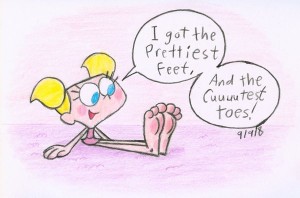 3. Some horses do fine without shoes. I am not exactly sure when “barefoot trimming” became the rage, but it seems to me that it wasn’t that long ago. All of a sudden, for some folks, shoeing became the root of all equine evils. You’ll hear stuff like this:
3. Some horses do fine without shoes. I am not exactly sure when “barefoot trimming” became the rage, but it seems to me that it wasn’t that long ago. All of a sudden, for some folks, shoeing became the root of all equine evils. You’ll hear stuff like this:
“Horses are born without shoes and have lived without shoes for millions of years. Many say horses need shoes now because we ride them. But Native Americans often outrode the cavalry and their horses were . . . barefoot.”
I don’t really have any disagreement with that statement. But, the thing is, the horses of the Native Americans didn’t have someone driving by on some schedule to trim their horses’ feet regularly, either..
BOTTOM LINE? If you want to see if your horse can go around without shoes, go ahead. Just don’t be smug about it.
4. Some horses do better with shoes. As wonderful as running around without shoes may be for many horses, the fact is that for many other horses, running around without shoes isn’t wonderful at all. For example, in southern California, the ground is usually hard, dry, and somewhat gritty. In other words, it’s sort of like sandpaper. As you might expect, some horses seem to react poorly if their feet are being sanded down all of the time. In that way, it’s sort of like if you ran around barefoot on pavement; there might not be anything wrong with your feet, but if you did it long enough, your feet would get sore.
BOTTOM LINE? You may need to get your horse shod. If he does need to be shod, go with it.
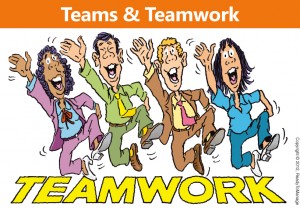 5. No particular approach to shoeing and trimming works for every problem, or every horse, every time. There are lots and lots of configurations of horse shoes. There are lots of materials from which shoes are made. And, you can attach them in any number of ways: glues, nails, screws. Oh, and there are boots, too. Some horses do great in those, as well.
5. No particular approach to shoeing and trimming works for every problem, or every horse, every time. There are lots and lots of configurations of horse shoes. There are lots of materials from which shoes are made. And, you can attach them in any number of ways: glues, nails, screws. Oh, and there are boots, too. Some horses do great in those, as well.
It’s a good thing to have lots of options. But it doesn’t make a lot of sense to be dogmatic about any one of them. When it comes to trying to solve problems of the horse’s feet – or, heck, just taking care of a normal horse’s foot – you don’t want to be wedded to any one approach. What works for one horse may not work for another. If anyone says he or she has all of the answers, do one thing. Run.
BOTTOM LINE? If one thing isn’t working, you’ll have lots opportunities to try something else. Assuming, of course, that anything can work (some problems just can’t be fixed). If your horse has a hoof problem, get your farrier and veterinarian working together, as a team. Things work best when everyone is on the same page.
6. If what you’re doing is working, don’t be anxious to change. Don’t be persuaded that your horse is about to fall into the abyss of unsoundness when someone points to your horse’s feet and starts talking about a “potential” problem. “Potential” is a pretty poisonous word when it comes to horse feet (and pretty much everything else about horse health), because it suggests that something is about to go wrong, whether it is, or not. Focusing on potential makes horse owners restless, and unhappy with the status quo of their healthy horse.
Don’t look to make changes just for the sake of making changes. If your horse is going sound, and he’s staying sound, and your farrier answers the phone when you call, and he shows up on time, why not leave well enough alone?
BOTTOM LINE? If it ain’t broke, don’t fix it.
For most horse owners, shoeing and trimming really shouldn’t be a source of anxiety. Find someone reliable to work with, and if your horse isn’t having any problems, don’t worry, be happy. Cue the music.

